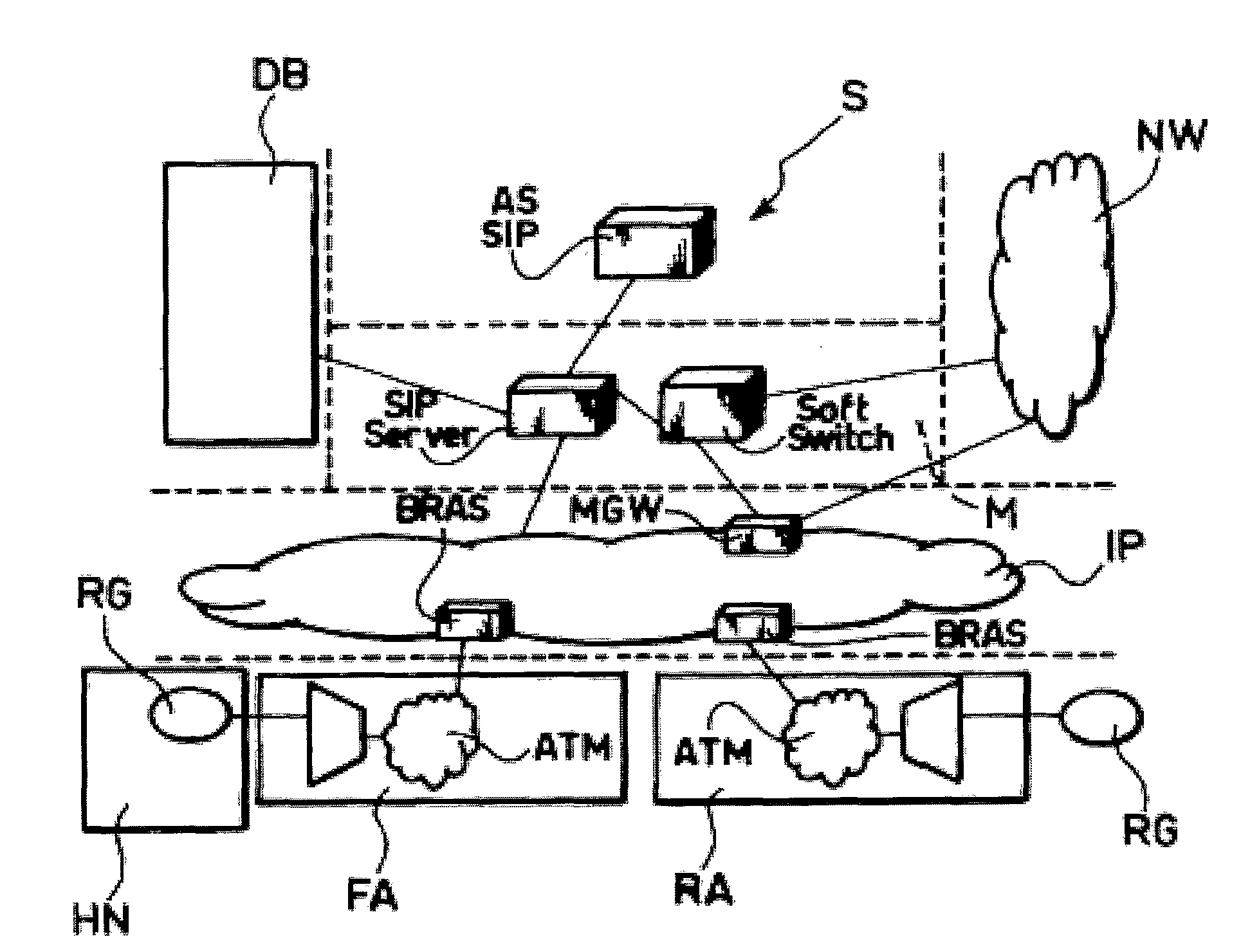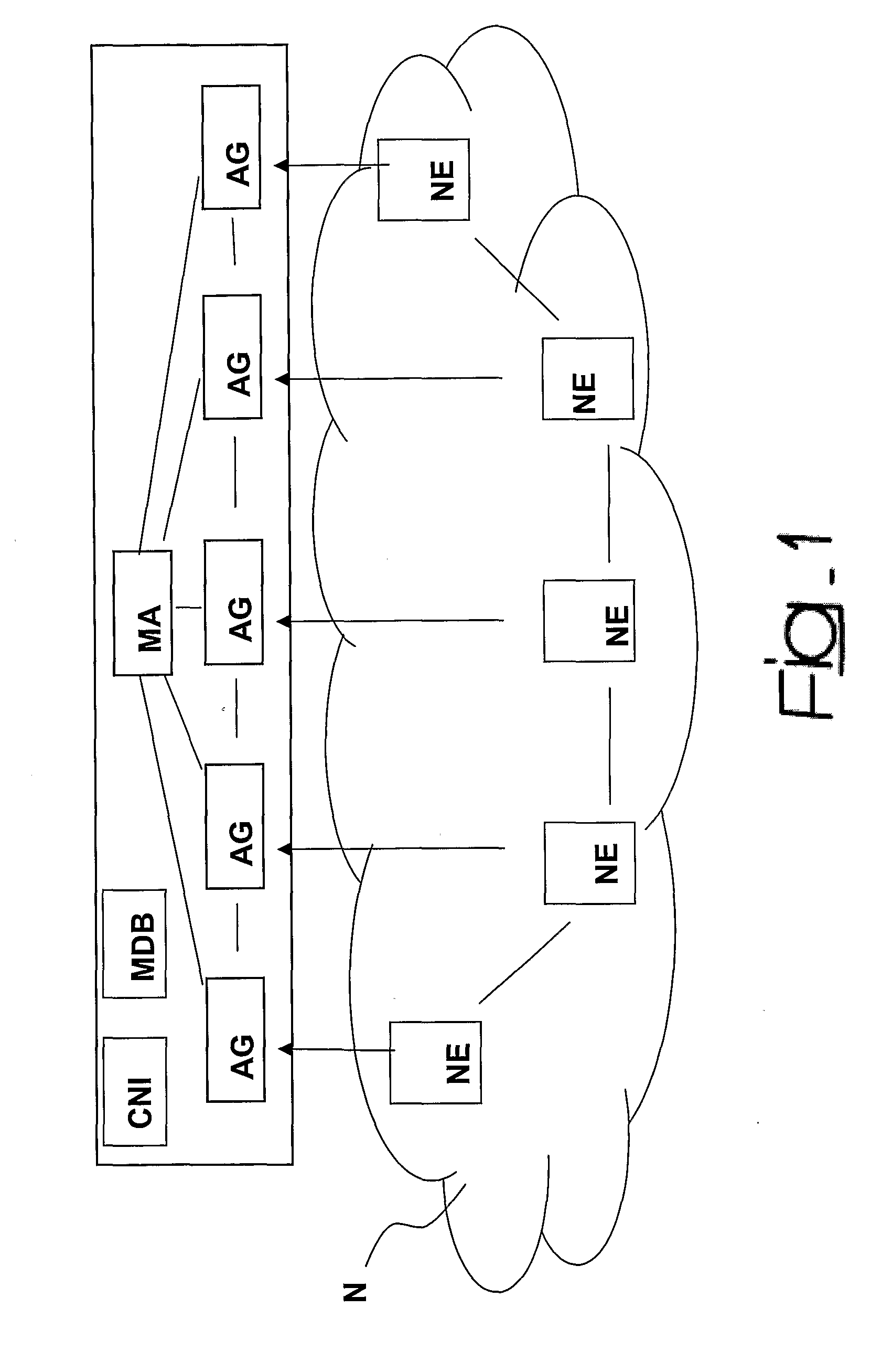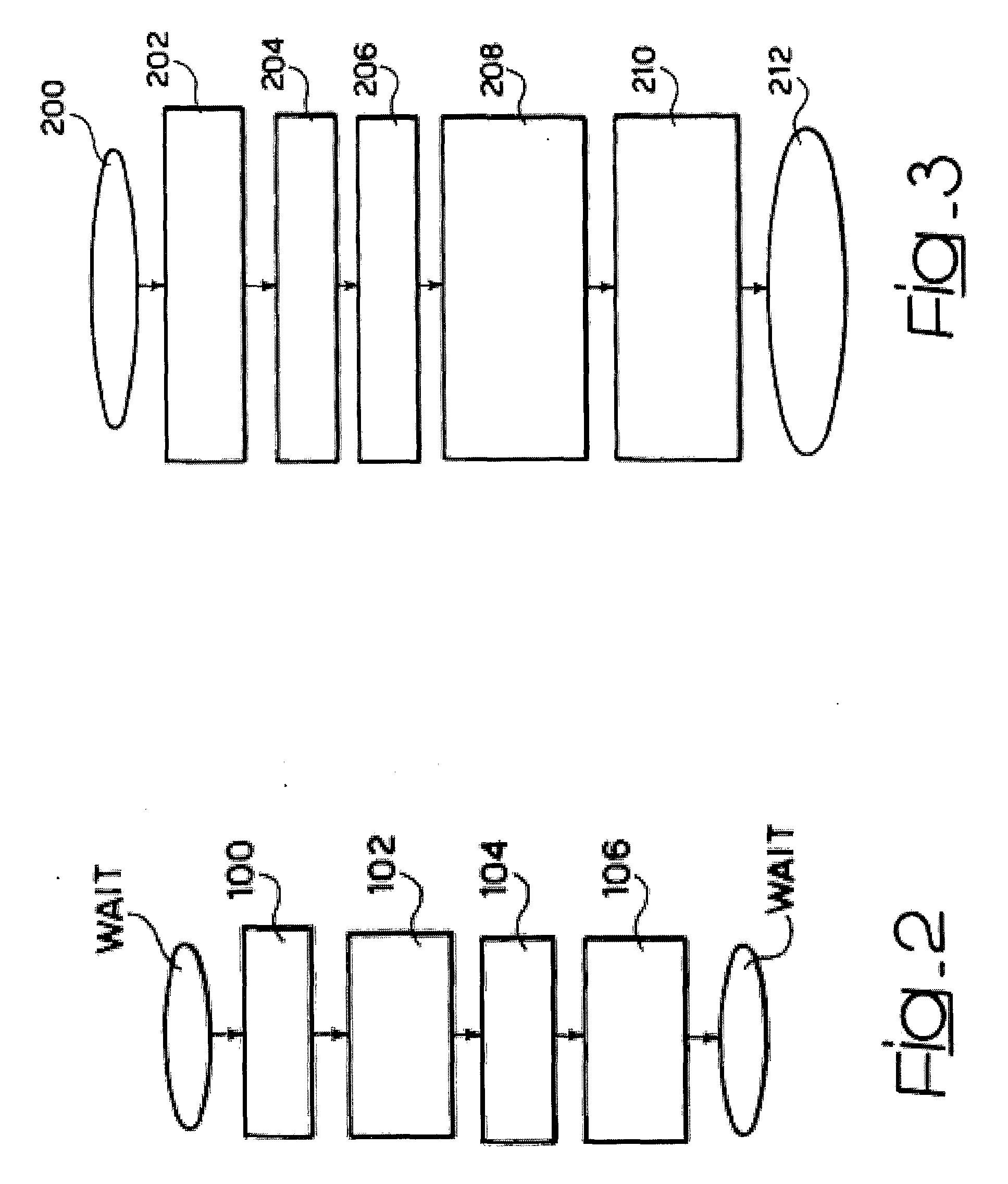Method and System for Identifying Faults In Communication Networks
a communication network and fault technology, applied in the field of communication network operating fault identification techniques, can solve problems such as difficulty in identifying linear and homogeneous solutions for network alarms regarding heterogeneous, their intrinsic complexity limits, and vertiginous increase in number, and achieve the effect of fair degree of likelihood
- Summary
- Abstract
- Description
- Claims
- Application Information
AI Technical Summary
Benefits of technology
Problems solved by technology
Method used
Image
Examples
Embodiment Construction
OF EMBODIMENT OF THE INVENTION
[0065]By way of introduction to the detailed description of certain examples of embodiment of the invention, a glossary is provided indicating the meaning of certain terms used throughout this description.
[0066]Agent: the term “agent” is used herein to indicate an entity that implements the modelling of a network element and represents the set of the relations of the network element with the surrounding network domain (network elements that are physically and logically adjacent). An agent is configured moreover as a proxy of the network element, i.e., it acts as element for decoupling the network element from the management applications, providing a standard interface for interaction with the network element. An agent is therefore an autonomous process that possesses an identity and that requires communication (for example, in a collaborative or competitive way) with other agents so as to fulfil its tasks. This communication is obtained through the asyn...
PUM
 Login to View More
Login to View More Abstract
Description
Claims
Application Information
 Login to View More
Login to View More - R&D
- Intellectual Property
- Life Sciences
- Materials
- Tech Scout
- Unparalleled Data Quality
- Higher Quality Content
- 60% Fewer Hallucinations
Browse by: Latest US Patents, China's latest patents, Technical Efficacy Thesaurus, Application Domain, Technology Topic, Popular Technical Reports.
© 2025 PatSnap. All rights reserved.Legal|Privacy policy|Modern Slavery Act Transparency Statement|Sitemap|About US| Contact US: help@patsnap.com



